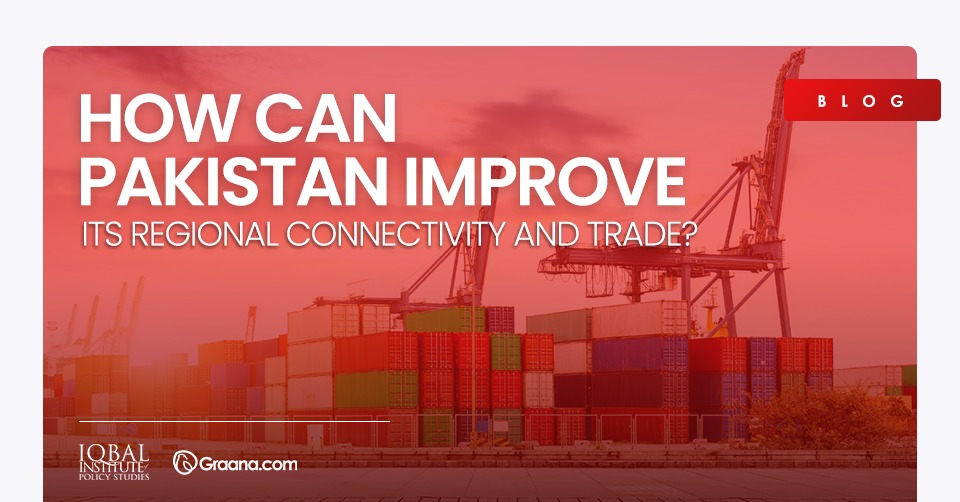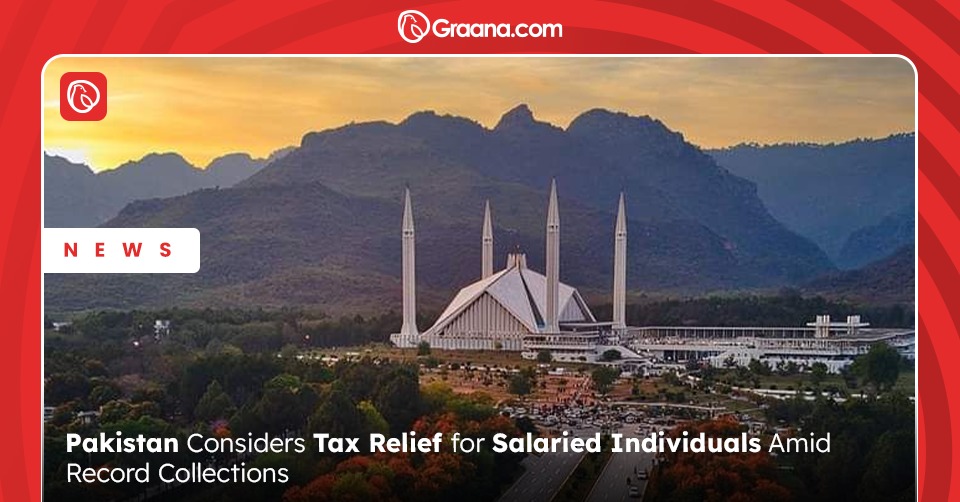The idea of a country developing and growing in isolation has become archaic. Expansive development is only possible when regions connect and develop together, shaping the patterns of regional economic cooperation and social development.
Regional trade and connectivity present nations with tremendous untapped potential. It can counterpoise the decline of the global economy and thus has become a priority of global economies.
It contributes to greater economic growth and prosperity driven by international trade and foreign investments and overcomes geographic divisions by connecting markets for goods, services, and factors markets, facilitating energy, people, and ideas.
However, due to socio-political disputes, many countries trade with distant economies on better terms than with their neighbours. This impedes economic growth and impacts the development of the entire region.
Therefore, governments must adopt intelligent policies that foster regional trade and connectivity to accelerate structural transformations, improve regional security, and enhance political coordination among nations.
Why Enhancing Regional Connectivity and Trade Important for Pakistan?
Acknowledging the significance of connectivity in economic and strategic developments, South Asian countries have commenced various regional connectivity initiatives. However, Pakistan has been lagging in this regard. The country has faced stagnant economic growth due to regional unrest and domestic problems.
For instance, Pakistan’s foreign exchange reserves fell from $1.2 billion to $4.3 billion as of January 2023 (DAWN, 2023). Pakistan’s economy is expected to grow by only 2% in the current fiscal year ending June 2023 (Kiani, 2023). Issues of poverty, inequality, urbanisation, and challenges associated with infrastructure and environment, along with food and energy, have become more intricate.
Moreover, regional trade restrictions have diminished the benefits of shared land borders. For example, Pakistan allows only 138 items to be imported from India via the Attari-Wagah land route, the only land port between the two countries. This means that trade along the sea route dominates bilateral trade, which is not always the most cost-effective route for adjoining countries with a long common border (World Bank Group, 2018).
Also, Pakistan is struggling to keep pace with the growth and transformation of its peers and improvements in development outcomes have become slow and uneven. As a result, Foreign Direct Investment (FDI) has dropped to more than half to $430m (DAWN, 2022)
Furthermore, the country’s trade growth is -5.83% compared to a world growth of -3.91% (WITS, 2020). The trade-to-GDP ratio of Pakistan at 30% is one of the lowest ratios in the world, indicating the need for improvement (ADB, 2022).
According to World Bank Doing Business Index 2020, Pakistan ranks 108/190 economies in the ease of doing business and 111/190 in trading across borders due to restrictive and cumbersome business and trade environments (World Bank Group, 2020).
Pakistan’s exports to Afghanistan, China, Bangladesh, Sri Lanka, India, Iran, Nepal, Bhutan, and the Maldives account for only $953.113 million of Pakistan’s total global exports of $7.179 billion (Khan, 2022).
Therefore, it is high time for Pakistan to strategically take advantage of its geographic location to create a long-term plan that depends on regional connectivity and geoeconomics. Pakistan is located at the junction of three important regions: South Asia, Central Asia, and West Asia. It shortens access to the sea for all landlocked countries of Central Asia besides China.
It also provides a prominent and important gateway for multiple corridors of cooperation between all three regions, encompassing energy, trade, tourism, and transportation.
Pakistan’s three large seaports along the Arabian Sea and huge hydrocarbon reservoirs in the Baluchistan province give it an edge over other transit routes in the South Asian region. This strategic location has the potential to transform the country into a regional economic hub, which can assure a lucrative and prosperous future for the country.
However, much needs to be done to stimulate economic stability and sustained growth, and Pakistan needs to realise this potential.
Graana.com in collaboration with the Iqbal Institute of Policy Studies discusses ways to enhance regional connectivity and trade.
Ways to Enhance Regional Connectivity and Trade
Developing Economic Corridors
Developing economic corridors with innovative transport and trade infrastructure, facilities, and policies can boost economic activity within the country and with its neighbours. Economic corridors strengthen and develop infrastructure and industries and lead to urban development.
Moreover, it increases investments and opportunities to generate more economic activity, jobs, and efficient movement and transport of people and goods.
For example, China Pak Economic Corridor (CPEC) is valued at $46 billion and has the potential to modernise and transform Pakistan’s economy (Pakistan Observer, 2019). The GDP growth rate of Pakistan is expected to increase to 7.5% by 2030 with the addition of 2 million jobs in the market (Mirza, Fatima, & Ullah, 2019).
Developing Infrastructures
A resilient and good infrastructure is the backbone of the economy. The economy requires efficient and reliable infrastructure to link supply chains and seamlessly transport goods and services across borders.
Moreover, infrastructure also improves the standards of living in a country. Therefore Pakistan needs new and improved multimodal transport networks to connect urban centres with domestic and international markets.
As a result, an influx of trade and tourism will be boosted. As Pakistan’s location allows it to provide convenient and modern rail and roadways with relatively short distances, it has taken initiatives that will strengthen its economy.
For example, the Peshawar-Torkham Expressway between Afghanistan and Pakistan will cater to 30,000 vehicles per day, create 60,000-100,000 new jobs, and will support communities through commercial infrastructure and the revitalisation of industrial estates in the area (The World Bank, 2019).
Developing and Modernizing Industries
Industrial development results in a dynamic and competitive economic performance that can increase the country’s capital, reduce unemployment, encourage foreign trade, accelerate resource efficiency, alleviate poverty, and promote national and regional prosperity.
Therefore, Pakistan must develop and modernise its major and minor industries equipped with the latest technologies and a highly competent and skilled workforce. The government can drive such developments through effective tax incentives, new policies and other creative mechanisms. An improved and efficient industrial sector will attract multiple economic corridors resulting in trade and regional connectivity.
Urban Development
Metropolitan areas are progressively seen as regional development engines in a globalising world. For example, in 2020, Beijing registered over 45,000 foreign-invested businesses from more than 165 nations and regions and welcomed 736 high-tech foreign-invested firms (Interesse & Zhang, 2022).
Thus, urban development is crucial for sustainable growth, increasing productivity, and the emergence of innovation and ideas. More than 80% of global GDP is generated through cities (The World Bank, 2020).
Therefore, Pakistan must focus on developing a new and well-connected system of urban cities that involves green practices and incorporate modern trends. This will strengthen multiple industries in the country, for instance, the real estate sector, which contributes 60% to 70% of Pakistan’s wealth from assets of approximately $300 to $400 billion (Fraz, 2021).
Developments in this industry will generate demand from more than a hundred ancillary industries, including the construction industry and financial services. As a result, more job opportunities would be created, and foreign investments will be attracted.
Furthermore, innovative urban cities will act as high-value-added industries and service oriented-economies, resulting in larger labour markets, increased employment opportunities, and reduced congestion costs.
Better Trade Policies and Services
Pakistan has the potential to improve its international trade if it formulates effective and flexible trade policies that encourage regional connectivity and growth. These policies must ensure that the country’s trade services should be in line with the market trends and quality and be certified on internationally acceptable standards.
Also, the policies should encourage trade and connectivity with all regional countries despite political and ideological differences. For example, in 2019, Pakistan downgraded its trade relations with India amid the Kashmir dispute. This impacted the economy of both countries (Kahn, 2022).
Moreover, the policies should reduce trade costs by revamping shipping connectivity, enhancing logistics performance, and investing in major infrastructures that link major seaports and international airports to remote areas, which can reduce domestic and international trade costs.
As a result, multinational firms and organisations will be incentivised and encouraged to export and expand their trade flows through Pakistan. For instance, Reforms in Bosnia and Herzegovina to facilitate cross-border trade by simplifying government processes for issuance of export-import licenses, ease in accessing permits, and reduced approval costs saved businesses an estimated $1.26 million (The World Bank, 2018).
Furthermore, better trade policies can expand Pakistan’s local and national markets beyond borders, fueling economic growth and productivity. Pakistan can also adopt trade policies of developed countries that have achieved maximum economic growth through regional connectivity.
Conclusion
Trade is crucial for keeping an economy open, dynamic, and competitive. It also promotes regional cooperation, peace, and stability. However, despite its pivotal geostrategic location, Pakistan has failed to avail long-term growth prospects provided by regional connectivity and trade.
As a result, the flow of capital, goods, innovation, and services is hindered, aggravating the country’s economic stagnation. Therefore, the government must take effective measures to improve trade resilience and productivity and enhance regional cooperation and connectivity. It can foster extensive economic growth and unleash the country’s untapped potential.




